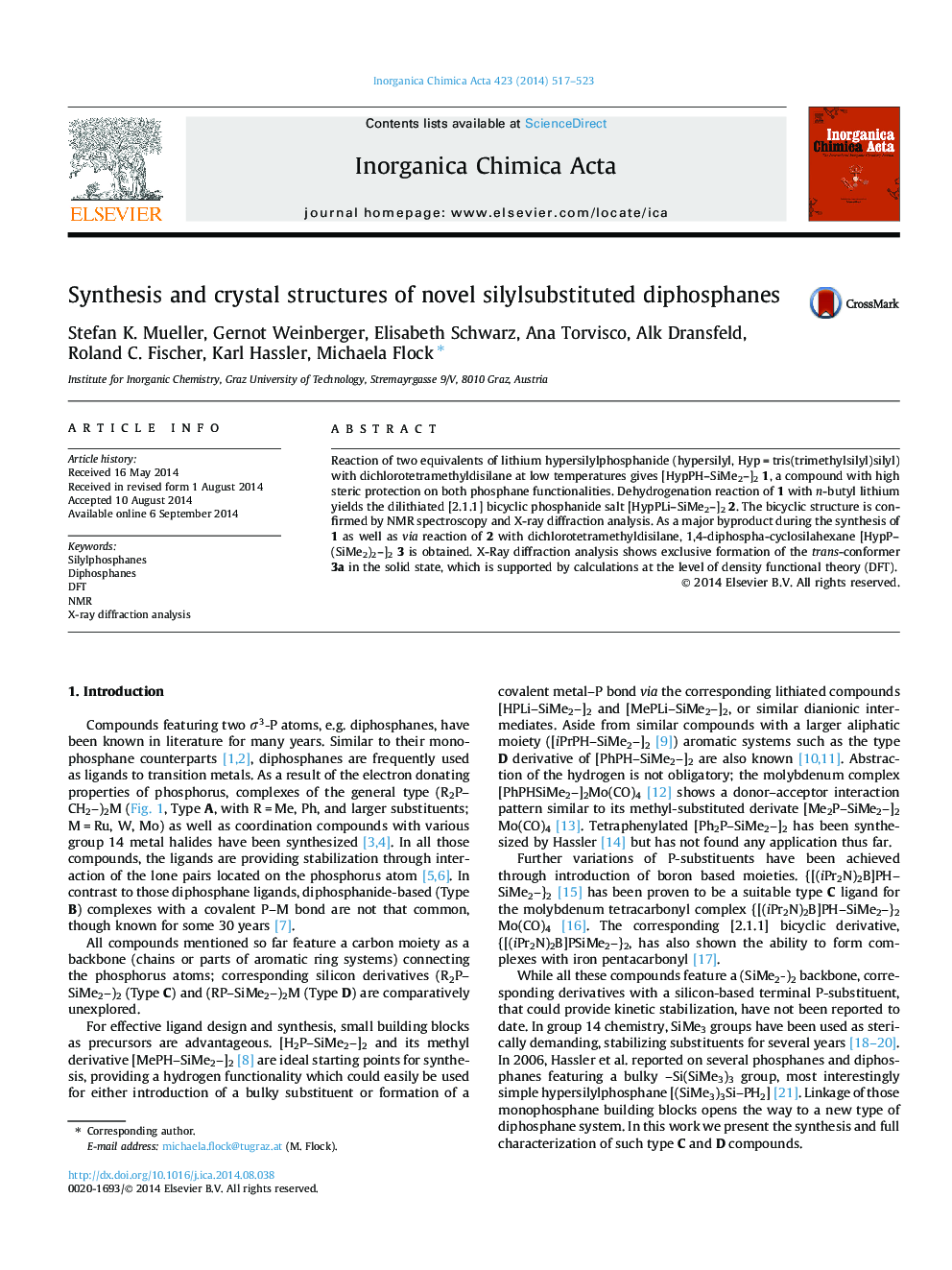| Article ID | Journal | Published Year | Pages | File Type |
|---|---|---|---|---|
| 1309498 | Inorganica Chimica Acta | 2014 | 7 Pages |
•Sterically protected diphosphanes have been synthesized.•Experimental data concerning stereochemistry correlates with DFT calculations.•Solid state structures are reported for three novel diphosphanes.•Distribution of products strongly depends on n-BuLi:educt ratios.
Reaction of two equivalents of lithium hypersilylphosphanide (hypersilyl, Hyp = tris(trimethylsilyl)silyl) with dichlorotetramethyldisilane at low temperatures gives [HypPH–SiMe2–]21, a compound with high steric protection on both phosphane functionalities. Dehydrogenation reaction of 1 with n-butyl lithium yields the dilithiated [2.1.1] bicyclic phosphanide salt [HypPLi–SiMe2–]22. The bicyclic structure is confirmed by NMR spectroscopy and X-ray diffraction analysis. As a major byproduct during the synthesis of 1 as well as via reaction of 2 with dichlorotetramethyldisilane, 1,4-diphospha-cyclosilahexane [HypP–(SiMe2)2–]23 is obtained. X-Ray diffraction analysis shows exclusive formation of the trans-conformer 3a in the solid state, which is supported by calculations at the level of density functional theory (DFT).
Graphical abstractReaction of a sterically protected diphosphane with n-butyl lithium leads to a bicyclic diphosphanide structure. The bicyclic structure, in which each lithium atom coordinates to only one solvent molecule, is retained in solution.Figure optionsDownload full-size imageDownload as PowerPoint slide
